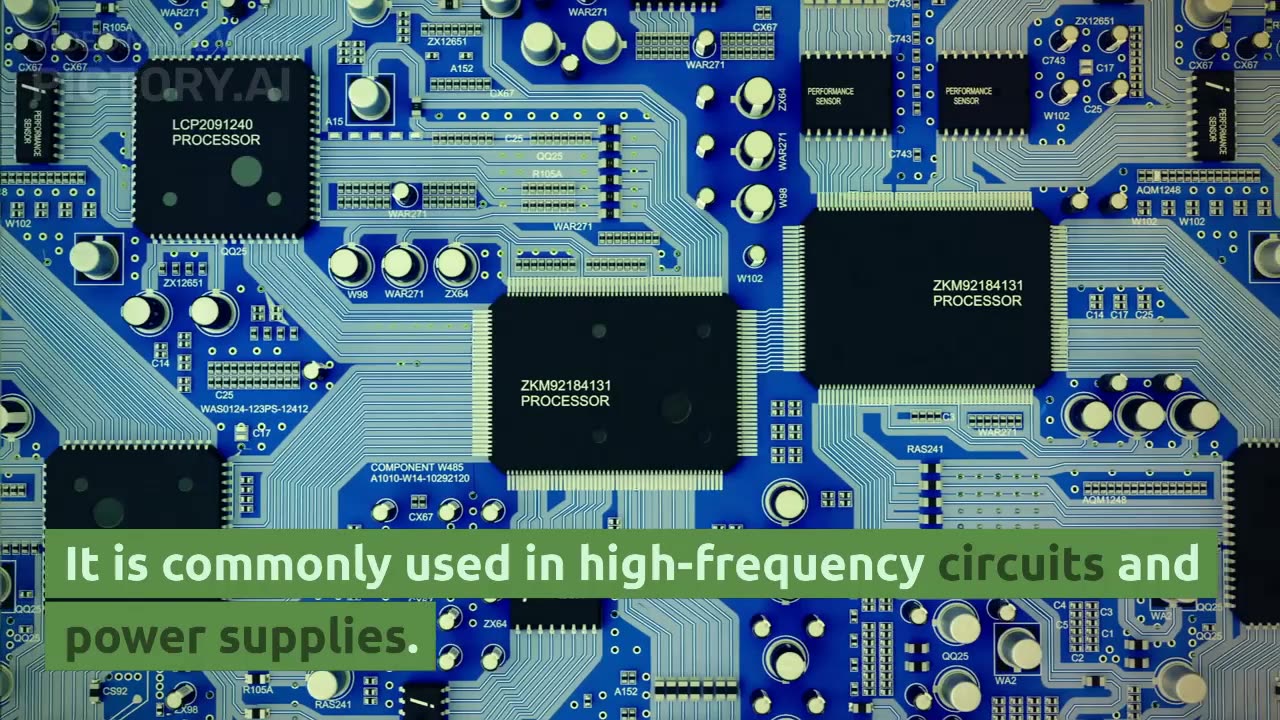Premium Only Content

What is the Difference Between Transistor and Diode? || History of Diode || Type of Diode
Both diodes and transistors are types of semiconductor devices that find a wide range of applications in different electronic circuits such as clippers, clampers, oscillators, rectifiers and amplifiers, etc. However, they have different functions and operate differently.
Go through this article to get an overview of how diodes and transistors function and how they are different from each other.
A diode has only one PN-junction and two terminals viz. anode (positive terminal of the diode) and cathode (negative terminal). There are two modes of operation of diode, i.e. forward bias and reverse bias.
Forward biasing of diode means the anode is connected to positive terminal of battery and cathode to the negative terminal battery and in the forward-biased mode, the diode acts as a closed switch.
While in the reverse biased mode, the anode is connected to the negative terminal and the cathode is connected to the positive terminal of the source. In the reverse bias mode, the diode works an open switch.
Therefore, a diode is a unidirectional semiconductor switch that allows current only in the forward direction and blocks in the current in the reverse direction. Thus, it is widely used in rectification, i.e., for the conversion of AC into DC.
The history of the diode can be traced back to the discovery of the "Edison effect" in the late 19th century. This led to the development of vacuum tube diodes in the early 20th century. Later, in the 1940s, semiconductor diodes were developed using materials such as germanium and silicon.
There are several types of diodes, including:
Zener diode: A type of diode that is designed to operate in the reverse breakdown region, allowing current to flow in the reverse direction when a certain voltage threshold is reached. This property is used in voltage regulation circuits.
Schottky diode: A type of diode that has a low forward voltage drop and a fast switching speed. It is commonly used in high-frequency circuits and power supplies.
Light-emitting diode (LED): A type of diode that emits light when current flows through it. LEDs are commonly used in lighting and display applications.
Photodiode: A type of diode that is designed to detect light. It converts light energy into an electrical signal.
On the other hand, a transistor is a three-terminal semiconductor device that can be used as an amplifier, switch, or oscillator. It consists of three layers of semiconductor material: the emitter, base, and collector. The base terminal controls the flow of current between the emitter and collector, allowing it to amplify or switch electronic signals.
In summary, diodes and transistors are both important semiconductor devices used in electronics, but they have different functions and operate differently. Diodes allow current to flow in one direction and are used in rectification and voltage regulation circuits, while transistors can be used as amplifiers, switches, and oscillators.
-
 LIVE
LIVE
Candace Show Podcast
1 hour agoJudge Slaps Down Blake Lively. Colleen Hoover Returns. | Candace Ep 146
7,319 watching -
 LIVE
LIVE
Melonie Mac
1 hour agoLet's Watch Playstation State of Play
275 watching -
 LIVE
LIVE
Revenge of the Cis
2 hours agoLocals Episode 196: Aloha
471 watching -
 1:05:34
1:05:34
In The Litter Box w/ Jewels & Catturd
21 hours agoReturn to Sender | In the Litter Box w/ Jewels & Catturd – Ep. 740 – 2/12/2025
36.1K17 -
 1:32:17
1:32:17
The Quartering
3 hours agoDOGE Storms the Department of Education, Trump FIRES USAID head, and Teacher freed from Russia
72.1K33 -
 59:57
59:57
The White House
4 hours agoPress Secretary Karoline Leavitt Briefs Members of the Media, Feb. 12, 2025
188K189 -
 UPCOMING
UPCOMING
John Crump Live
3 hours agoBreaking Down The J6 Pardons With The J6 Pardon Project
6 -
 1:09:47
1:09:47
Tucker Carlson
3 hours agoKen Paxton: How Soros Protects Drug Cartels, Being Blacklisted by Fox News, and the Laken Riley Act
133K92 -
 LIVE
LIVE
Film Threat
7 hours agoCAPTAIN AMERICA: BRAVE NEW WORLD REVIEW (NON-SPOILER) | Hollywood on the Rocks
180 watching -
![[Ep 607] Constitutional Crisis! There Is No Proof! AAARRRGG! – Leftist Lunacy & Why It Will Fail](https://1a-1791.com/video/fwe2/bb/s8/1/3/0/u/O/30uOx.0kob-small-Ep-607-Constitutional-Crisi.jpg) LIVE
LIVE
The Nunn Report - w/ Dan Nunn
1 hour ago[Ep 607] Constitutional Crisis! There Is No Proof! AAARRRGG! – Leftist Lunacy & Why It Will Fail
327 watching